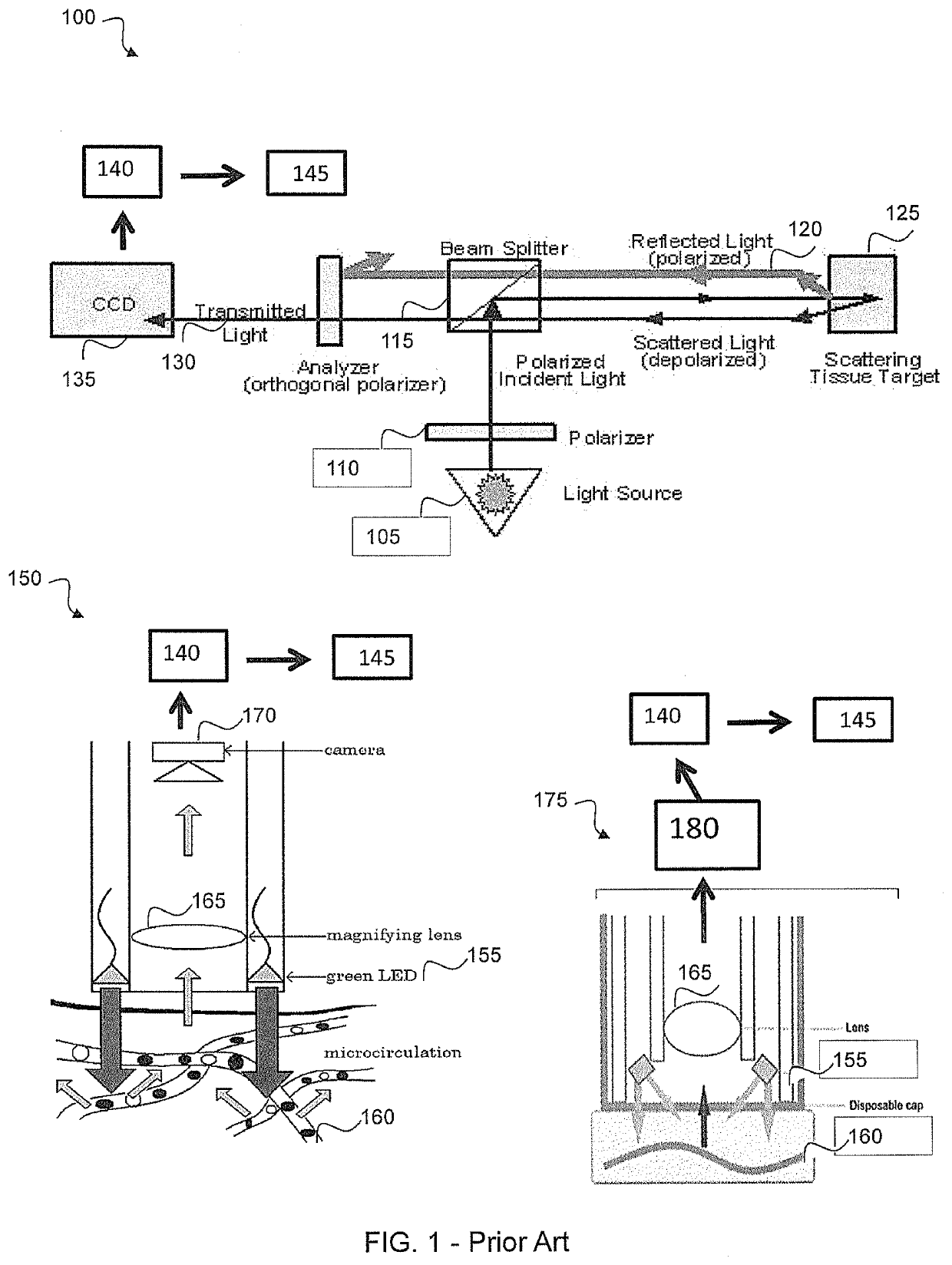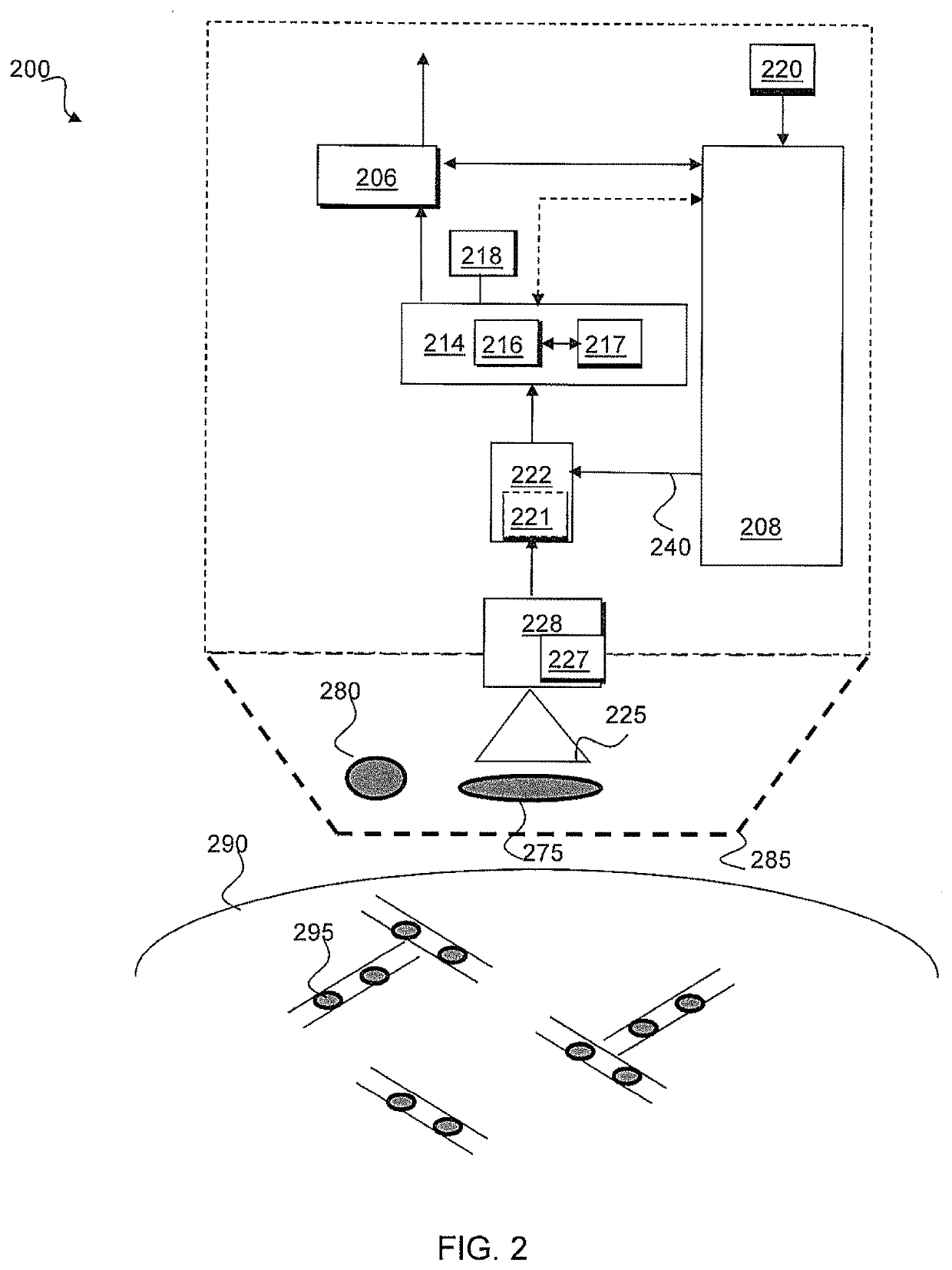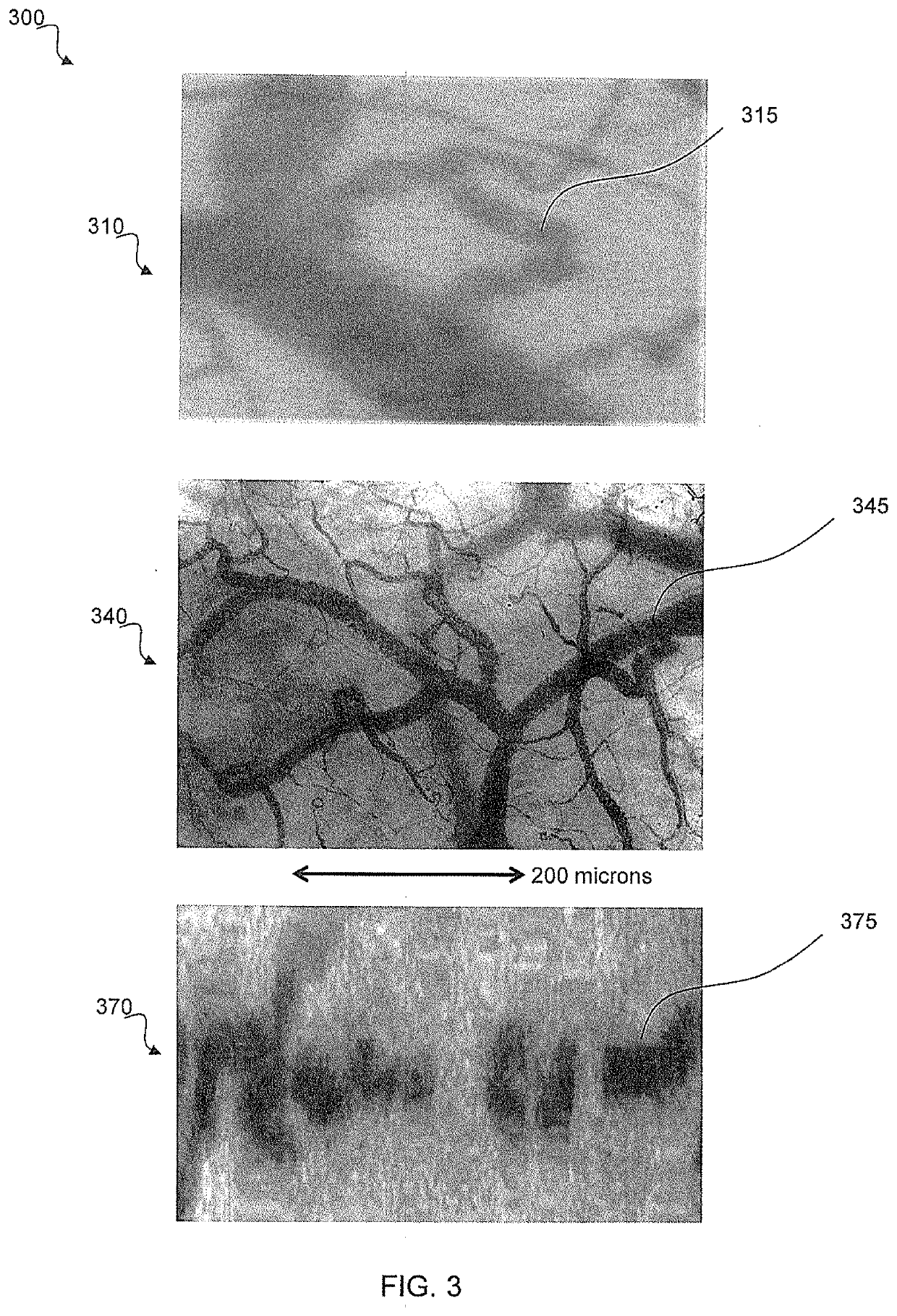Method and apparatus for diagnostic analysis of the function and morphology of microcirculation alterations
a technology of microcirculation and diagnostic analysis, applied in the direction of diagnostic recording/measuring, instruments, image enhancement, etc., can solve the problems of not directly imaging but rather measuring, and none of these clinical technologies can image the capillaries, etc., to achieve easy measurement, difficult diagnosis, and great precision
- Summary
- Abstract
- Description
- Claims
- Application Information
AI Technical Summary
Benefits of technology
Problems solved by technology
Method used
Image
Examples
first embodiment
[0167]A first embodiment is the method wherein IVM analysis of the MC and quantification of morphological and functional parameters of the microcirculation and changes therein over time is used to evaluate health, disease and in response to therapy. The input variable parameters in this AI analysis include but not limited to movie clips and images of the MC and derived parameters including visual inspection obtained by IVM and variables using other MC techniques described in the Date Set section of all organ surfaces including but not limited to the sublingual and oral region. Examples of the Input variable parameters include but are not limited functional parameters of the MC including: Microcirculatory hemodynamic values: capillary, venule and arteriolar blood flow and blood volume, identification of types of vessels (e.g. capillaries, capillary loops, arterioles, venules), Proportion of perfused vessel density or functional capillary density (PVD [mm / mm2]. FCD (density of functio...
seventh embodiment
[0175]A seventh embodiment is the method wherein IVM analysis of MC is used to show changes in microcirculatory function and morphological improvement related to health as a result of exercise and therapy. It has been reported that exercise (>150 min / week) in hypertension patients results in improved functional capillary density and red blood cell flow.
[0176]Improvement of the MC can also be achieved by therapy, for example, by use of cardiac assist devices. It has been shown that sustained improvement of the MC using such Impella technology can be used for bridge to treat following myocardial infarction. Following session of the Impella treatment MC function which had improved during Impella therapy remained improved following withdrawal of the Impella device. Similarly, it has been shown that weaning from an ECOS can be judged as a result of sustained improved sublingual red blood cell flow upon reduction of ECOS pump flow. It has been shown that such devices or cardiotonics in he...
PUM
 Login to View More
Login to View More Abstract
Description
Claims
Application Information
 Login to View More
Login to View More - R&D
- Intellectual Property
- Life Sciences
- Materials
- Tech Scout
- Unparalleled Data Quality
- Higher Quality Content
- 60% Fewer Hallucinations
Browse by: Latest US Patents, China's latest patents, Technical Efficacy Thesaurus, Application Domain, Technology Topic, Popular Technical Reports.
© 2025 PatSnap. All rights reserved.Legal|Privacy policy|Modern Slavery Act Transparency Statement|Sitemap|About US| Contact US: help@patsnap.com



